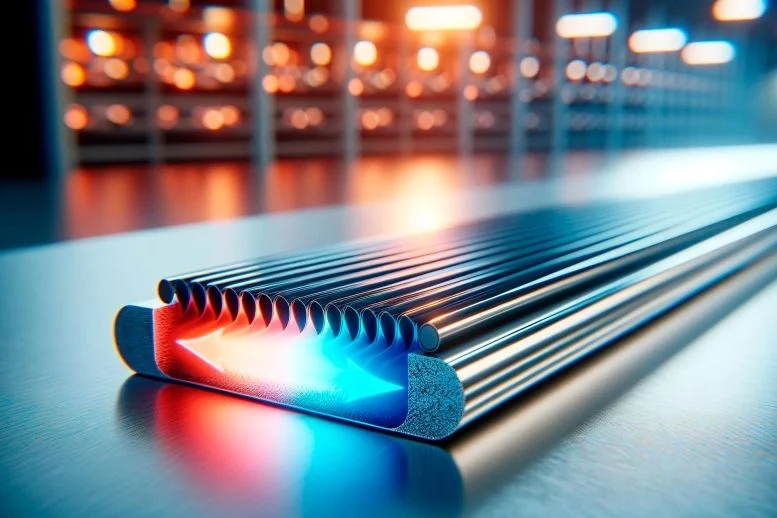博文
为未来能源揭开热电材料的秘密
 精选
精选
||
为未来能源揭开热电材料的秘密
诸平
据《中国科学》杂志社(Science China Press)2024年4月1日提供的消息,中加科学家合作为未来能源揭开了热电材料的秘密(Unlocking the Secrets of Thermoelectric Materials for Future Energy)。
热电材料(Thermoelectric Materials)是将热能转化为电能和减少浪费的关键,在自然和工业热梯度的驱动下,热电材料的用途已经从热回收扩大到催化。
随着人类社会的快速发展,对能源的需求呈爆发式增长。但现阶段一次能源的利用效率不足40%,其余部分以余热的形式散失,不仅造成了严重的能源浪费,而且加剧了环境问题。
热电材料作为一种能够将热能直接转化为电能的新型能源材料,在余热回收领域受到越来越多的关注。当热电材料两端存在温差时,在材料内部产生热电动势(thermoelectromotive force),从而实现热能向电能的转换。
热电材料的新兴应用(Emerging Applications of Thermoelectric Materials)
近年来,热电材料除了用作发电机外,还开辟了催化的新方向。自然界和工业生产中普遍存在的热量所造成的小温度梯度(<100 ℃)为催化反应提供了足够的动力。
这使得低品位废热资源的再利用能够驱动不同的催化过程,如制氢、有机合成、环境净化和生物医学应用。为提高能源利用效率、节能减排、绿色催化提供了新的解决方案。
热电催化的研究进展与展望(Advances and Future Prospects in Thermoelectrocatalysis)
基于这一新兴领域的最新进展,来自中国江苏大学量子与可持续技术研究所{ Institute of Quantum and Sustainable Technology (IQST), School of Chemistry and Chemical Engineering, Jiangsu University, China}的团队,提出了热电催化(thermoelectrocatalysis简称TECatal)的概念应用方向,并系统总结了现有的热电催化材料和工作模式。提出了4种主要的工作模式,包括杂化结构模式(hybrid structure mode)、单相模式(single-phase mode)、P-N纳米结模式(P-N nanojunction mode)以及热原电池模式(thermogalvanic cell mode),参见图2(Fig. 2)所示。
本研究从优化热电性能(thermoelectric properties)、优化能带工程(band engineering)、优化微结构(microstructures)、优化稳定性(stability)等方面探索提高热电催化材料性能的途径。并对热电催化材料在绿色能源(green energy)、肿瘤治疗(tumor treatment)、环境治理(environmental governance)等领域的应用前景进行了展望和探讨,为该领域的未来发展提供了重要参考。相关研究结果于2024年1月25日已经在《自然科学评论》(National Science Review)杂志网站发表——Yuqiao Zhang, Shun Li, Jianming Zhang, Li-Dong Zhao, Yuanhua Lin, Weishu Liu, Federico Rosei. Thermoelectrocatalysis: an emerging strategy for converting waste heat into chemical energy. National Science Review, 2024, 11(4), nwae036. DOI: 10.1093/nsr/nwae036. Published: 25 January 2024.
参与此项研究的除了来自江苏大学量子与可持续技术研究所(IQST)的研究人员之外,还有来自中国北京航空航天大学(Beihang University, China)、清华大学(Tsinghua University, China)、中国南方科技大学(Southern University of Science and Technology, China)以及加拿大国家科学研究所(Institut national de la recherche scientifique, Canada)的研究人员。
这项研究得到了中国国家自然科学基金项目{National Natural Science Foundation of China (22075126, 52202242 and 22350710187)}和深圳市杰出青年创新计划项目{Shenzhen Innovation Program for Distinguished Young Scholars (RCJC20210706091949018)}的资助。
上述介绍,仅供参考。欲了解更多信息,敬请注意浏览原文或者相关报道。
Waste heat emissions are universally present in the environment and industrial production. Innovations aimed at efficiently utilizing low-grade thermal energy have long been desired. Among these, thermoelectric materials can directly convert heat into electricity based on the Seebeck effect. The overall performance of a thermoelectric material is assessed through a dimensionless figure of merit, ZT, represented as ZT = S2⋅σ/κ, where S is the Seebeck coefficient, σ is the electrical conductivity and κ is the thermal conductivity. In the pursuit of high conversion efficiency, recent years have witnessed the emergence of many promising thermoelectric materials with notable ZT values (>2).
https://blog.sciencenet.cn/blog-212210-1427968.html
上一篇:科学的最新奇迹:电子材料在撞击中变得更坚固
下一篇:突破元素周期表超重元素挑战理论的极限

